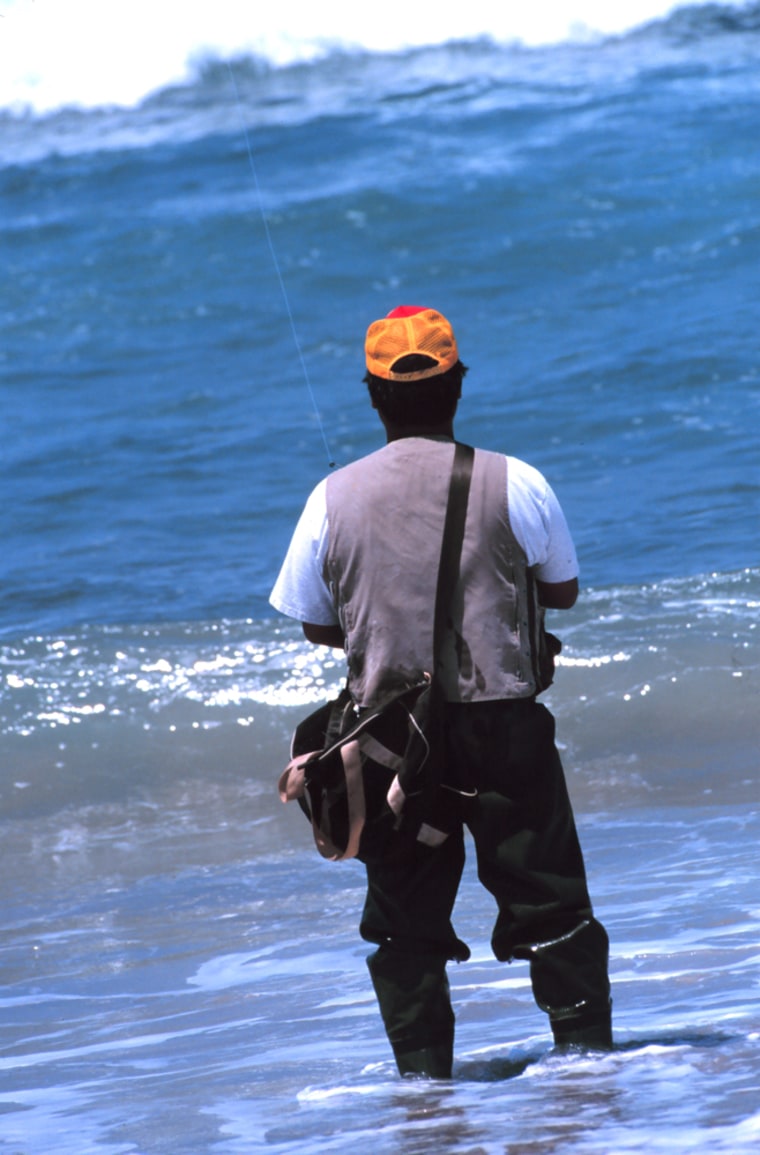Americans fishing for sport along coastlines or at sea are doing far more damage to U.S. marine fish stocks than anyone thought, accounting for nearly a quarter of the catch from overfished species, researchers report in the latest issue of the journal Science.
And for the “charismatic” species that saltwater enthusiasts really go for, the impact is even more dramatic, the researchers found.
The researchers said recreational fishing takes 59 percent of the red snapper in the Gulf of Mexico, 93 percent of red drum in the South Atlantic and 87 percent of bocaccio on the Pacific coast.
“With over 10 million saltwater recreational anglers in the U.S., and recreational fishing activity growing as much as 20 percent in the last 10 years, their aggregate impact is far from benign,” Will Figueira, a Duke University researcher who worked on the study, said in a statement released with the report.
Challenging conventional wisdom
The researchers hope their report, which was based on U.S. government data, will provide a wake-up call to regulators and to fishing enthusiasts about the damage being done to fish stocks.
“The conventional wisdom is that recreational fishing is a small proportion of the total take, so it is largely overlooked,” said ecologist Felicia Coleman of Florida State University, who led the study.
Co-author Larry Crowder, another Duke researcher, noted the impact of recreational fishing was startling both to researchers and the anglers, who often head out to sea in boats operated by professional guides and equipped with sonar devices and global positioning systems to locate the fish.
“While the individual may take relatively few fish, we show that a few fish per person times millions of fishermen can have an enormous impact,” he said.
When they looked at fish designated as species of concern by the U.S. government, sport fishing accounted for 23 percent of the take by weight, Coleman said.
Anglers, U.S. agency not impressed
The Recreational Fishing Alliance, with 90,000 anglers nationally, argued the researchers’ conclusions were based on flawed data.
Jim Donofrio, executive director of the group, pointed to a reported 35 percent jump in summer flounder catches. In reality, he said, torrential rains had kept anglers onshore, and the catches had dropped by 35 percent.
“We’ll accept regulations. That’s not a problem. But we will fight restrictions based on arbitrary data and inaccurate data,” Donofrio said.
And a National Marine Fisheries Service official didn't find the study useful.
“I don’t think they are saying anything new,” said Mike Sissenwine, NMFS director of scientific programs. “I didn’t know what the (overall) number was, nor do I think that anybody cares. But we were very well aware that for some species the impact is important, and therefore it is taken into account in fisheries management.”
But the researchers and others feel that the federal regulation is not effective.
“Yes, we already do regulate recreational fisheries,” said Andy Rosenberg of the University of New Hampshire. “But there has been an increase in recreational fishing. More people want to do it and more people have access to the coast."
No licenses in many states
Nearly half the coastal states do not require saltwater recreational fishing licenses, the researchers noted. "Unlike hunting on land, where hunters are licensed and the total take is controlled or managed by license lotteries," Crowder said, "similar controls for saltwater recreational anglers simply do not exist."
Catch-and-release programs may not help, either. The report cites NMFS data that show 20 percent of released fish end up dying. And many individual fish are caught repeatedly.
“A goliath grouper near one of my study sites had 20 hooks in its mouth,” said Coleman. “Bringing up a 400 pound fish onto your boat creates a marvelous photo opportunity, but it undoubtedly causes enormous physiological stress on the fish.”
The study was funded by the Pew Charitable Trusts, a nonprofit that funds environmental and other research projects.
Additional background on the study is online at www.bio.fsu.edu/us_landings/.
